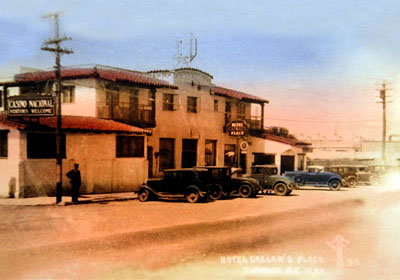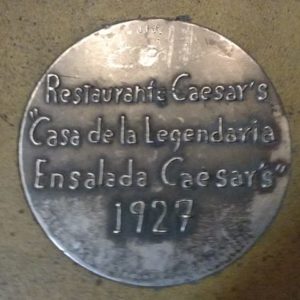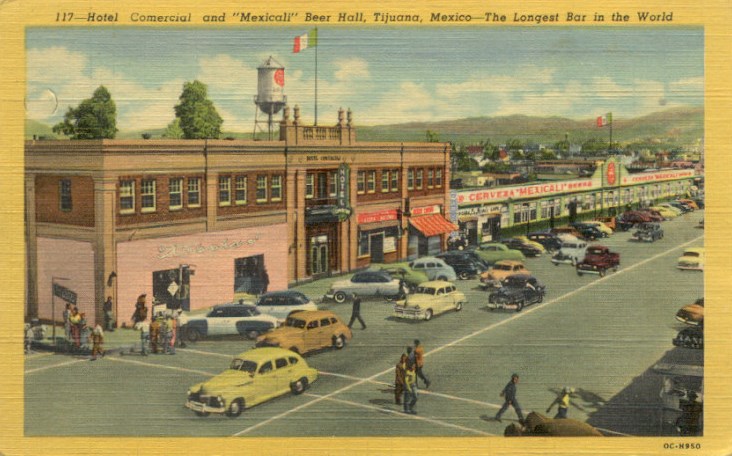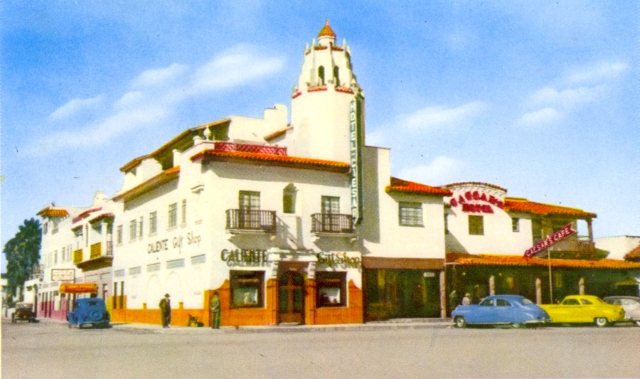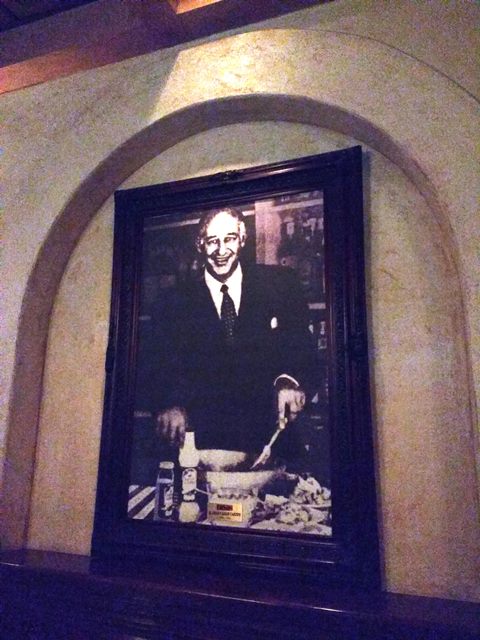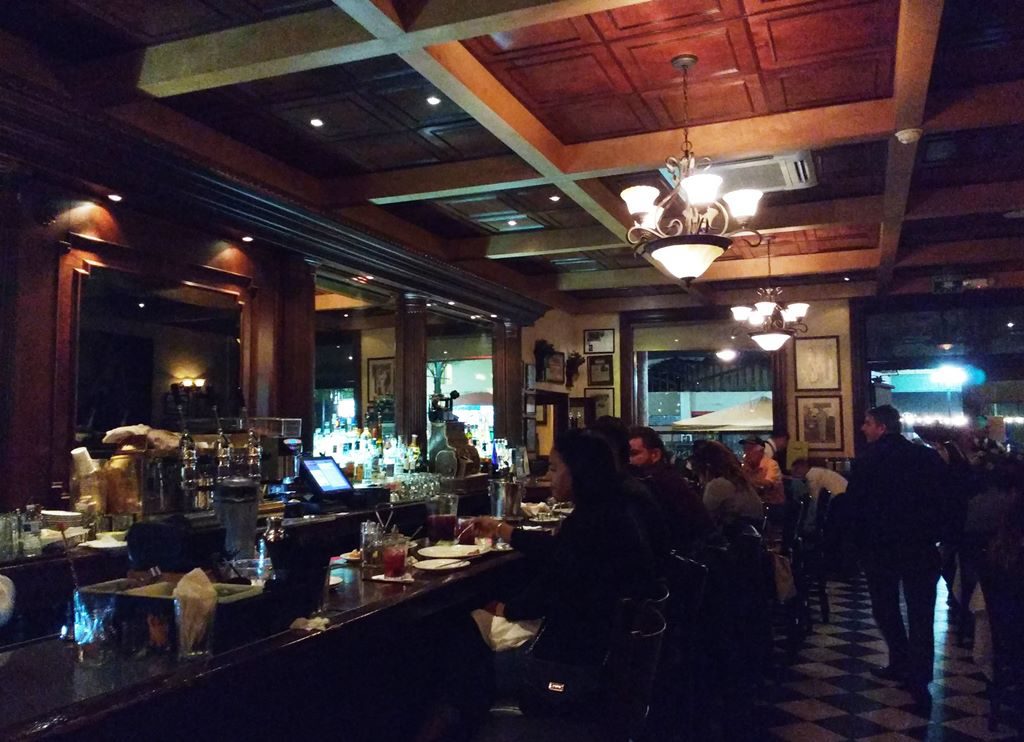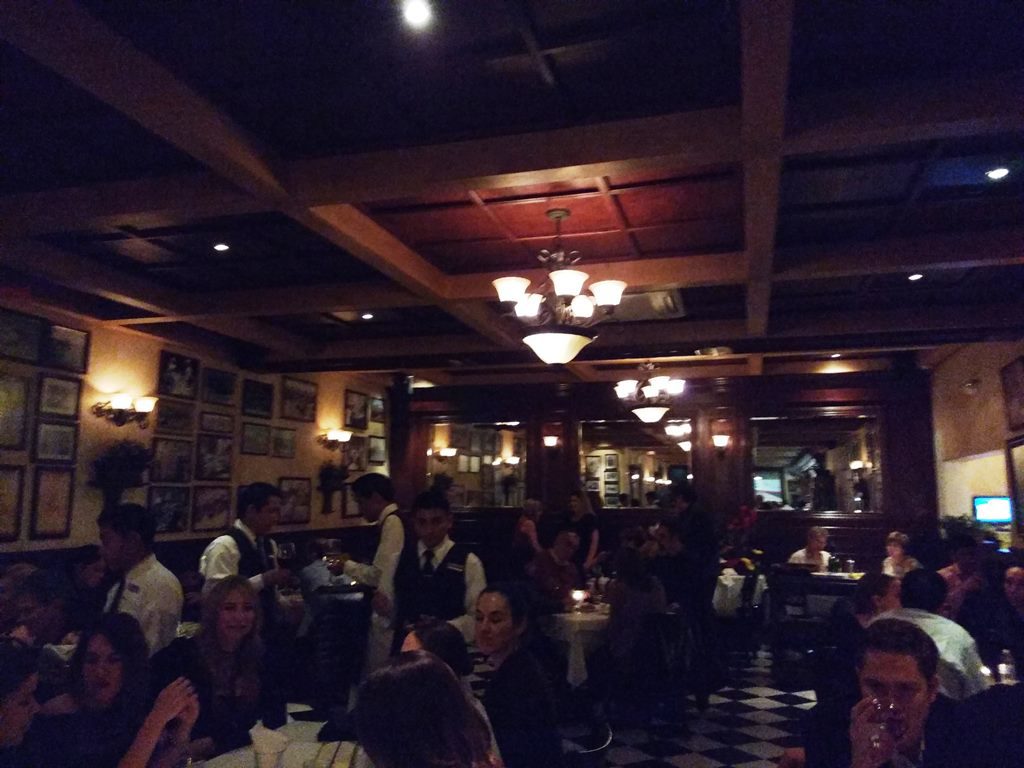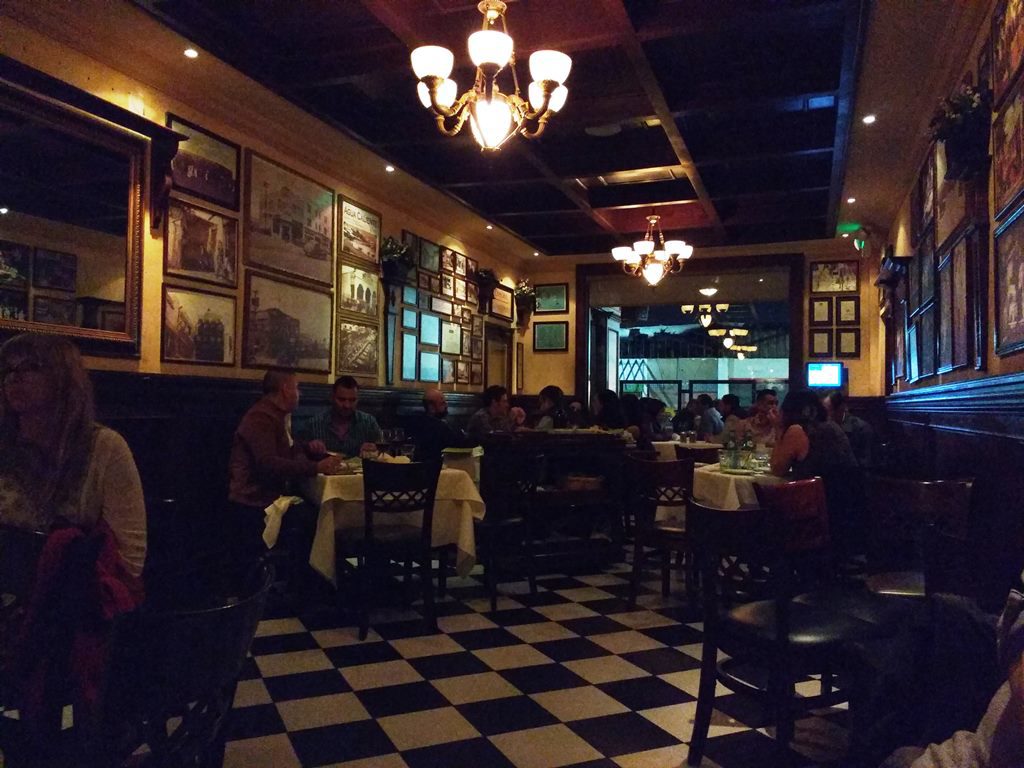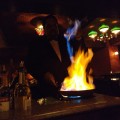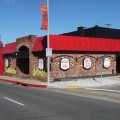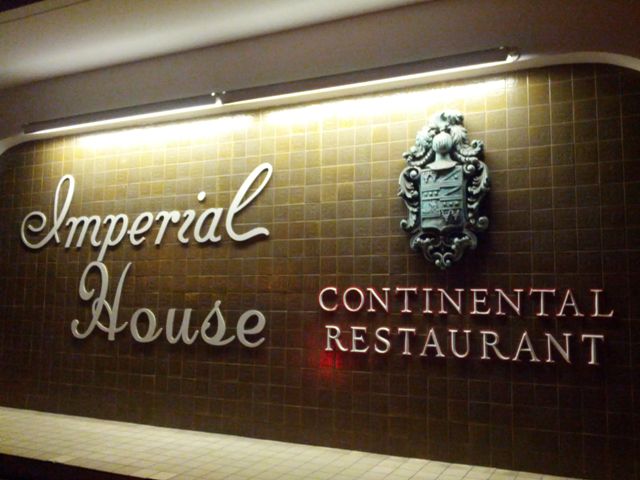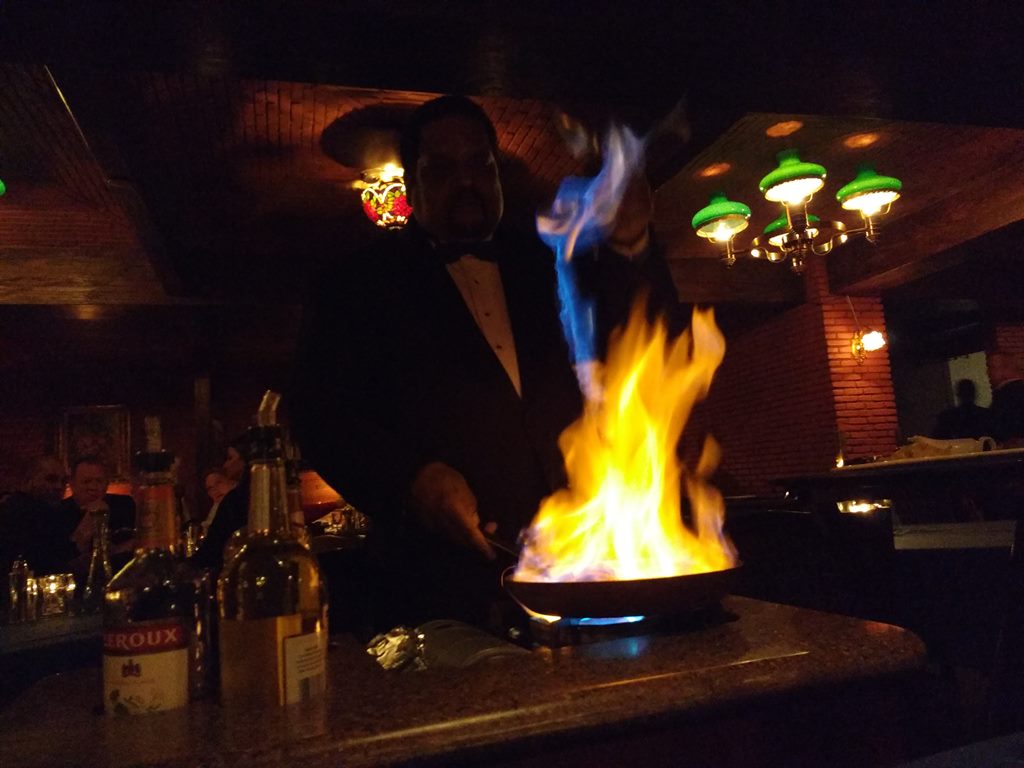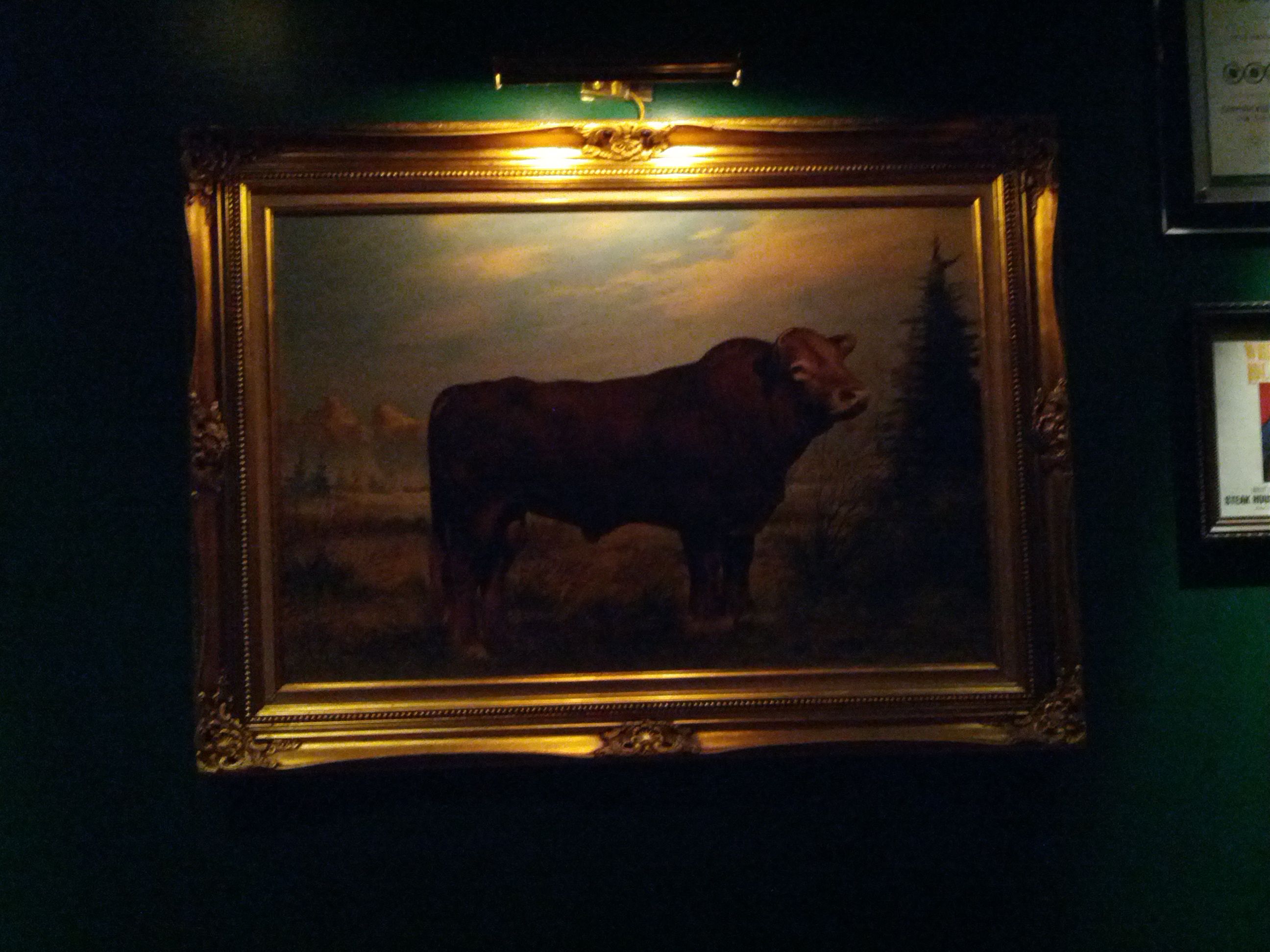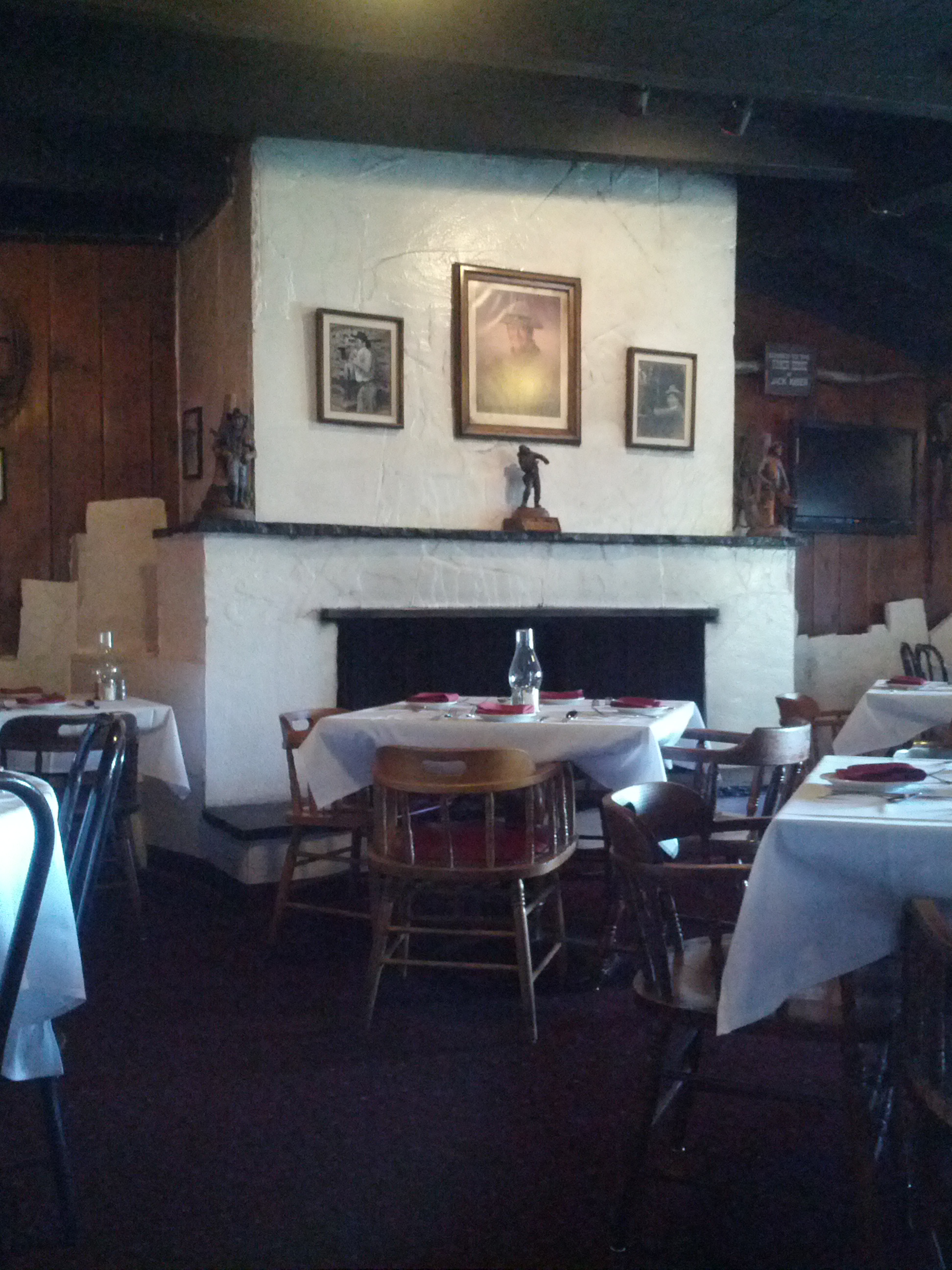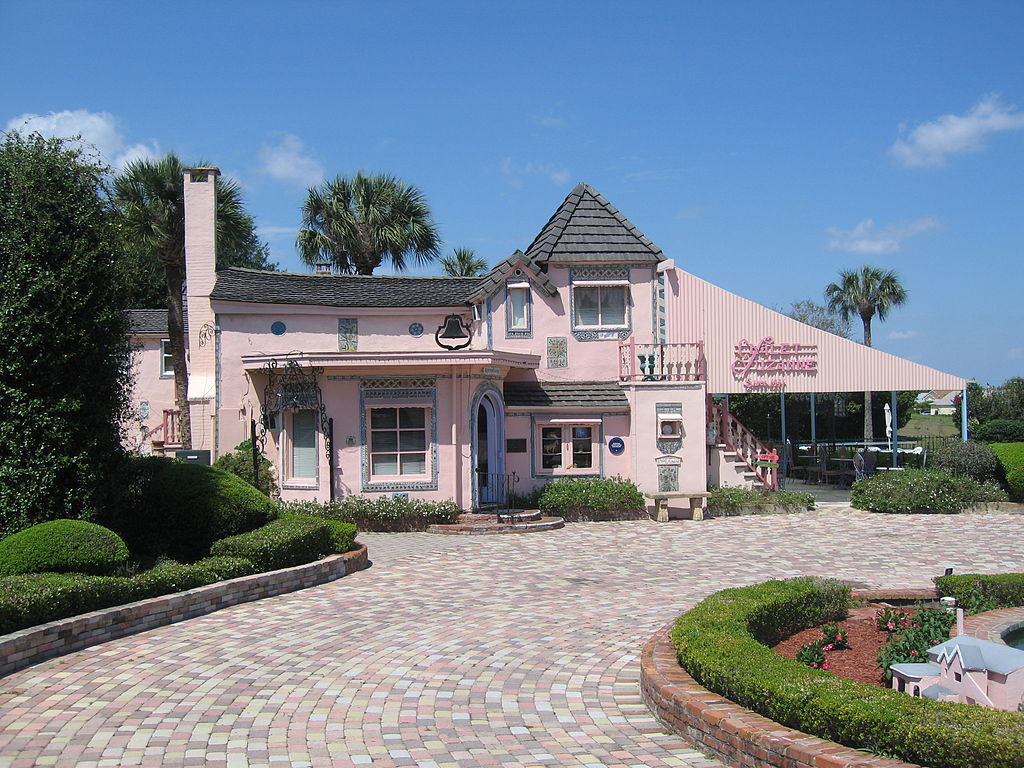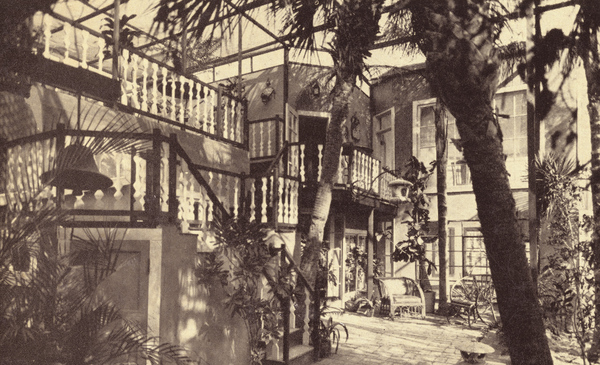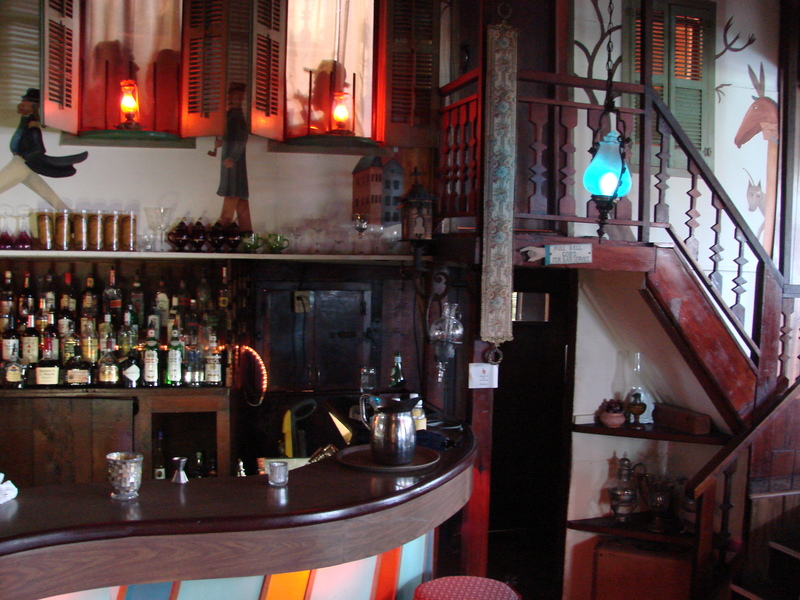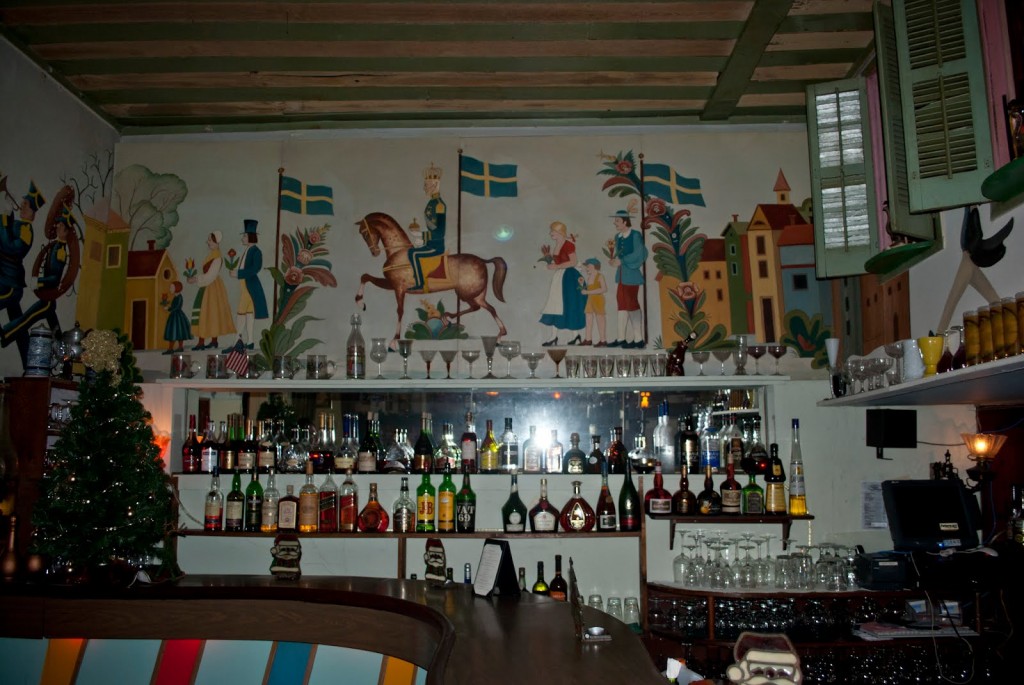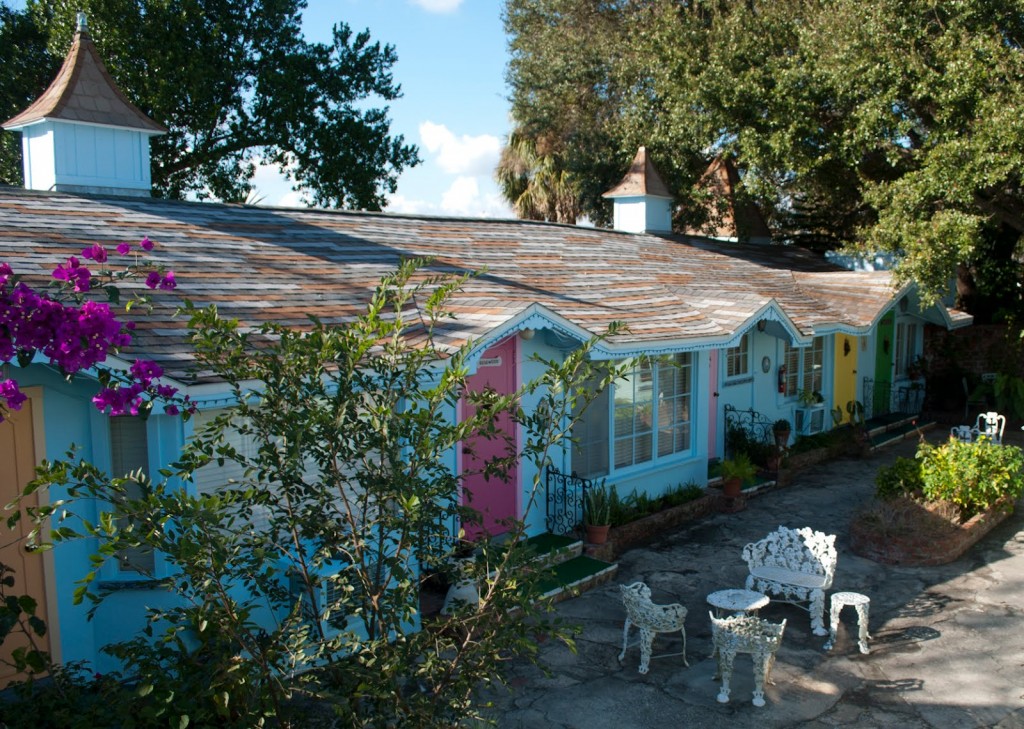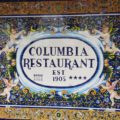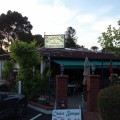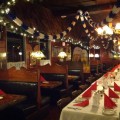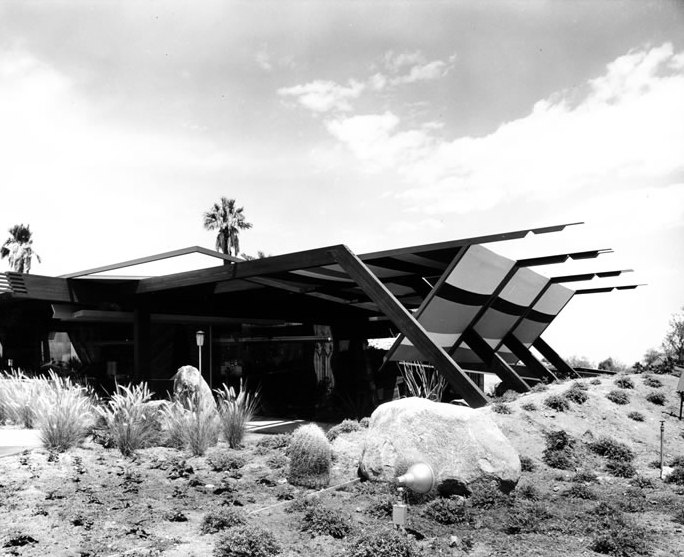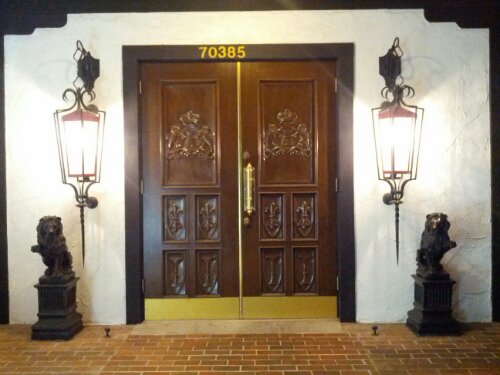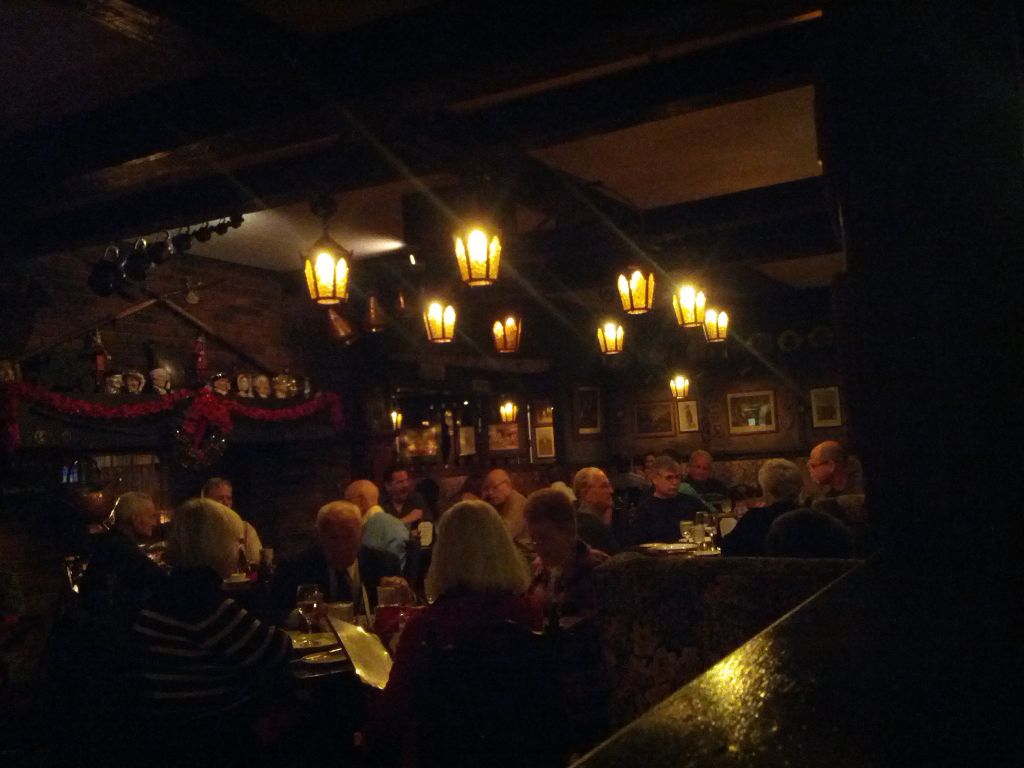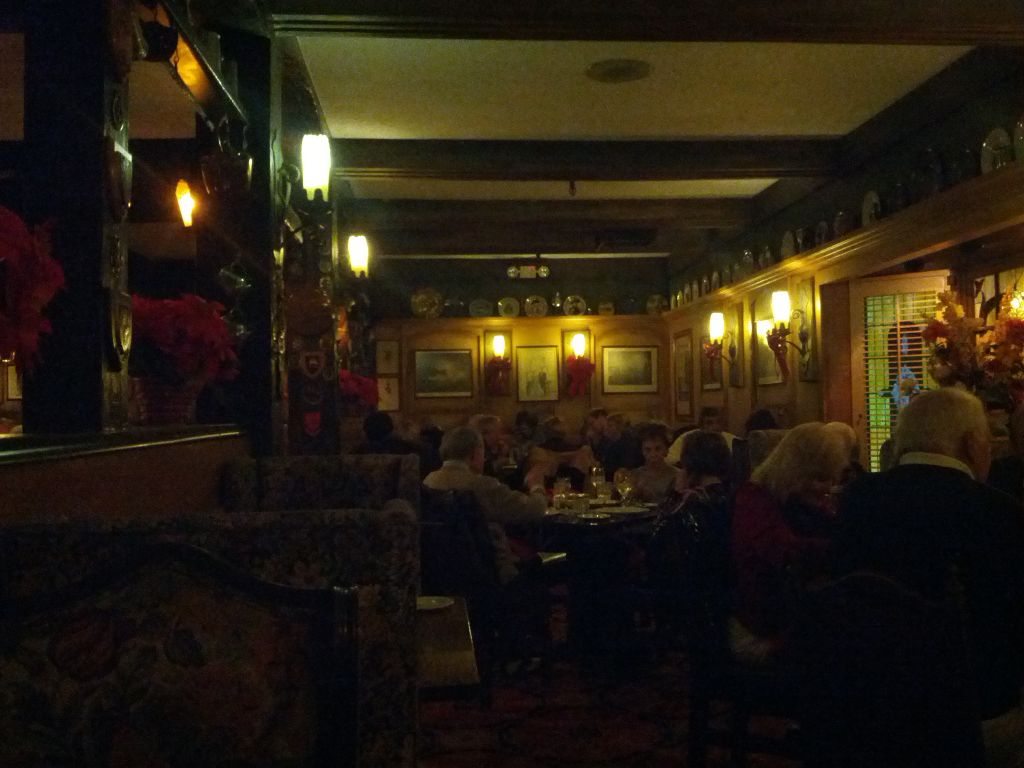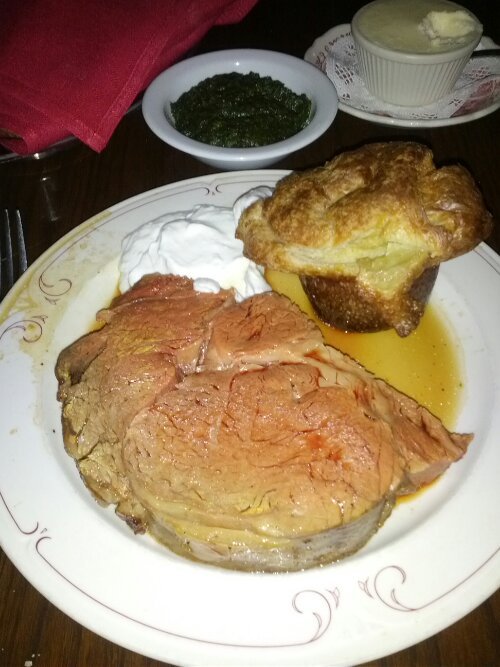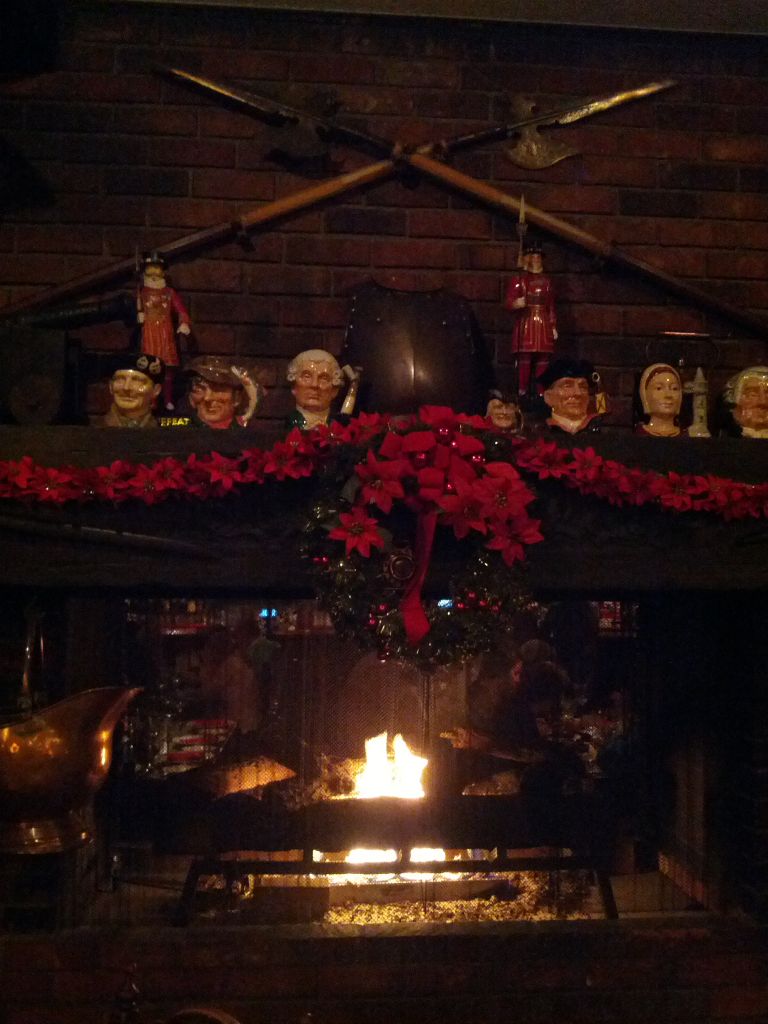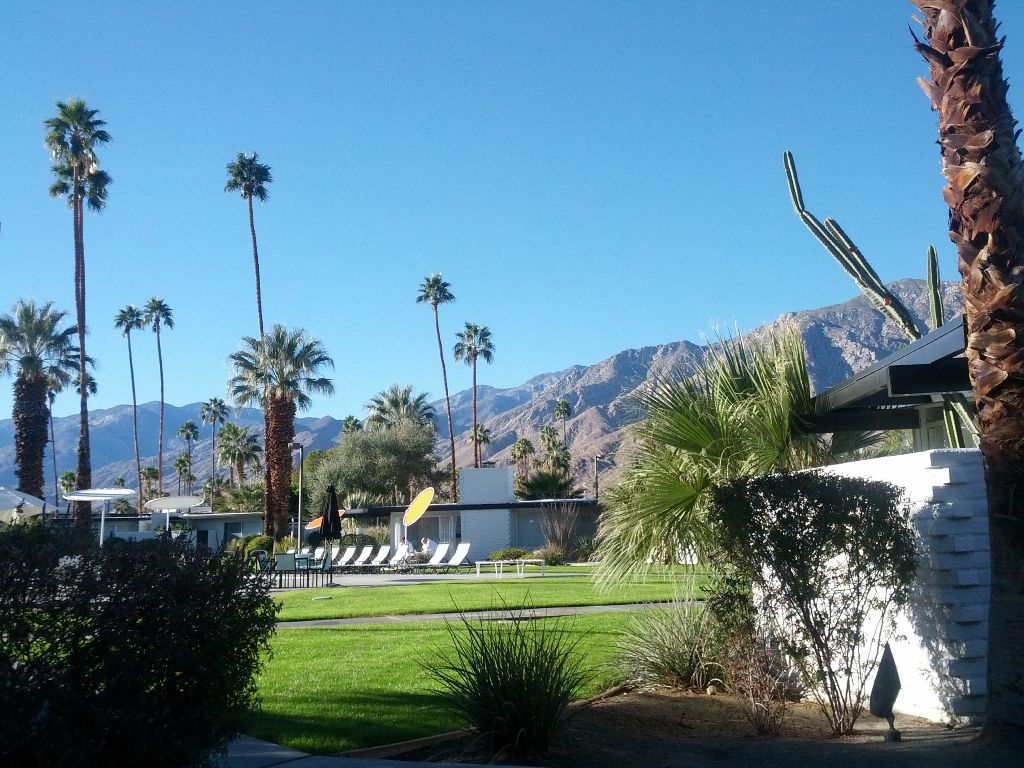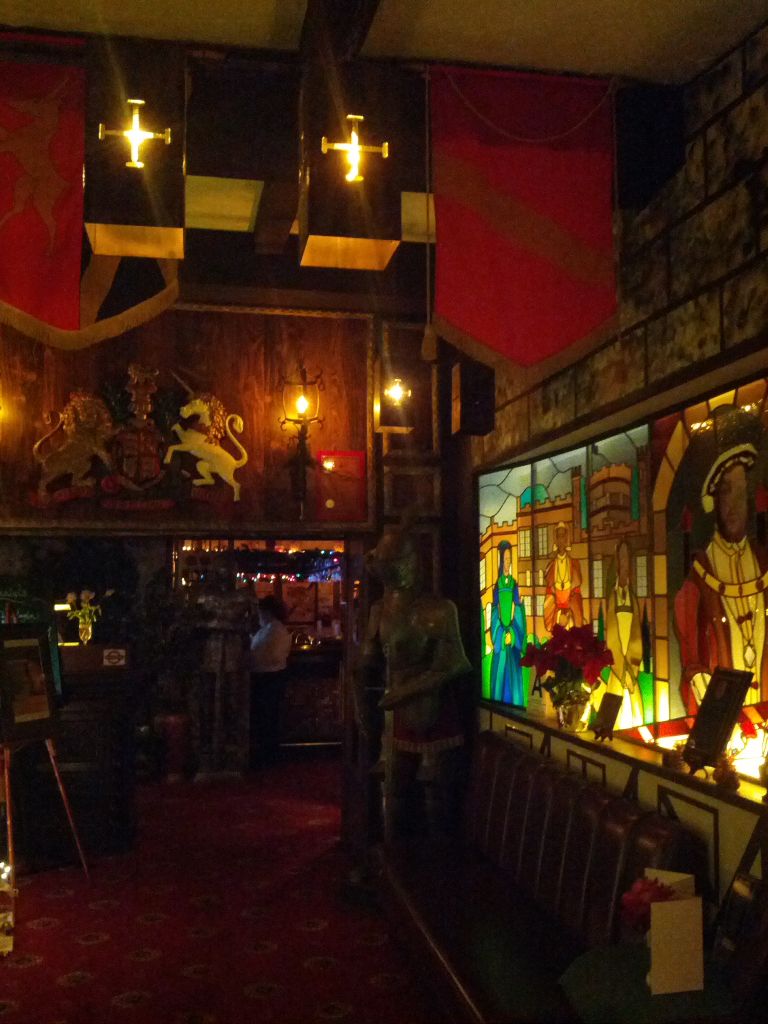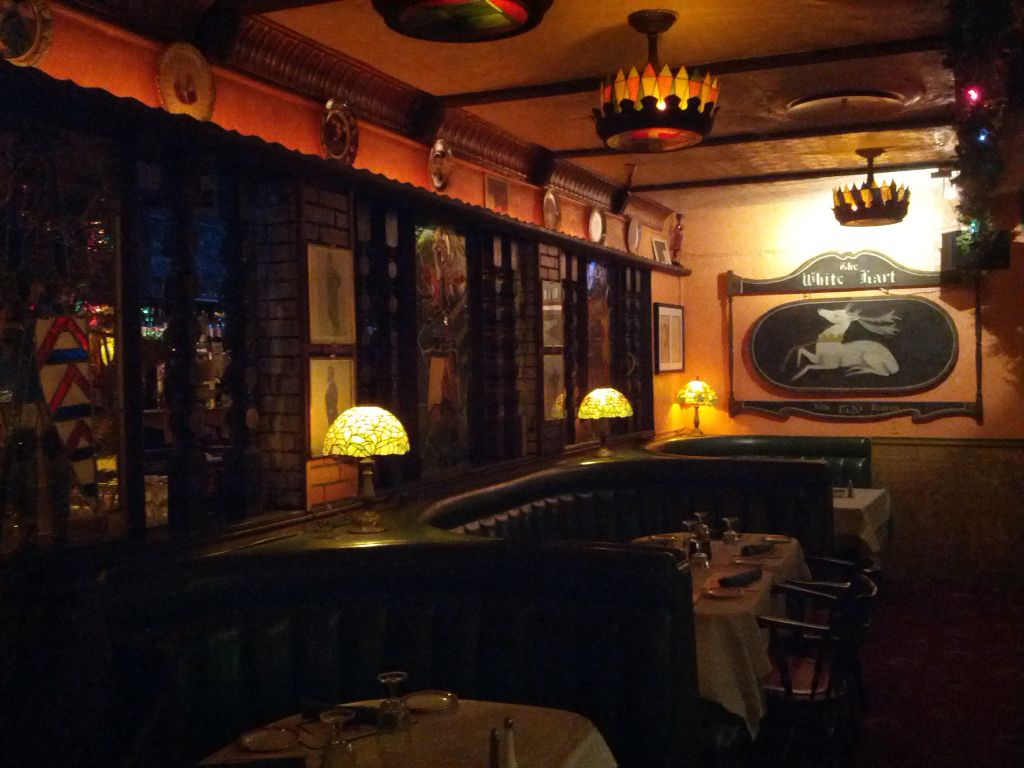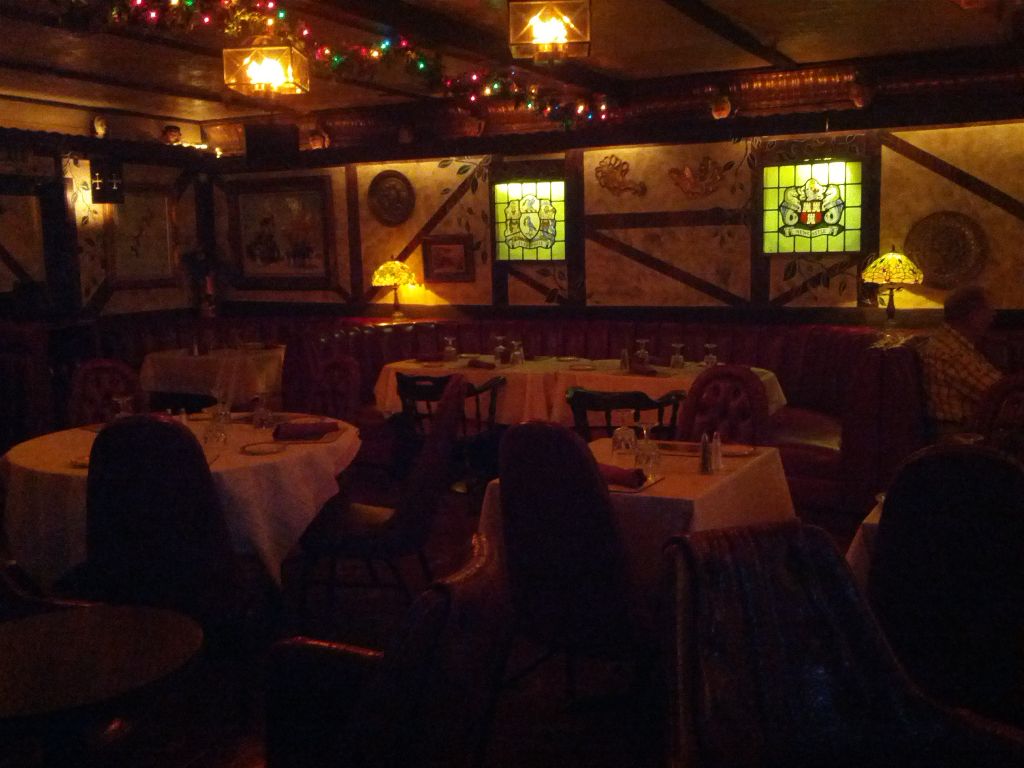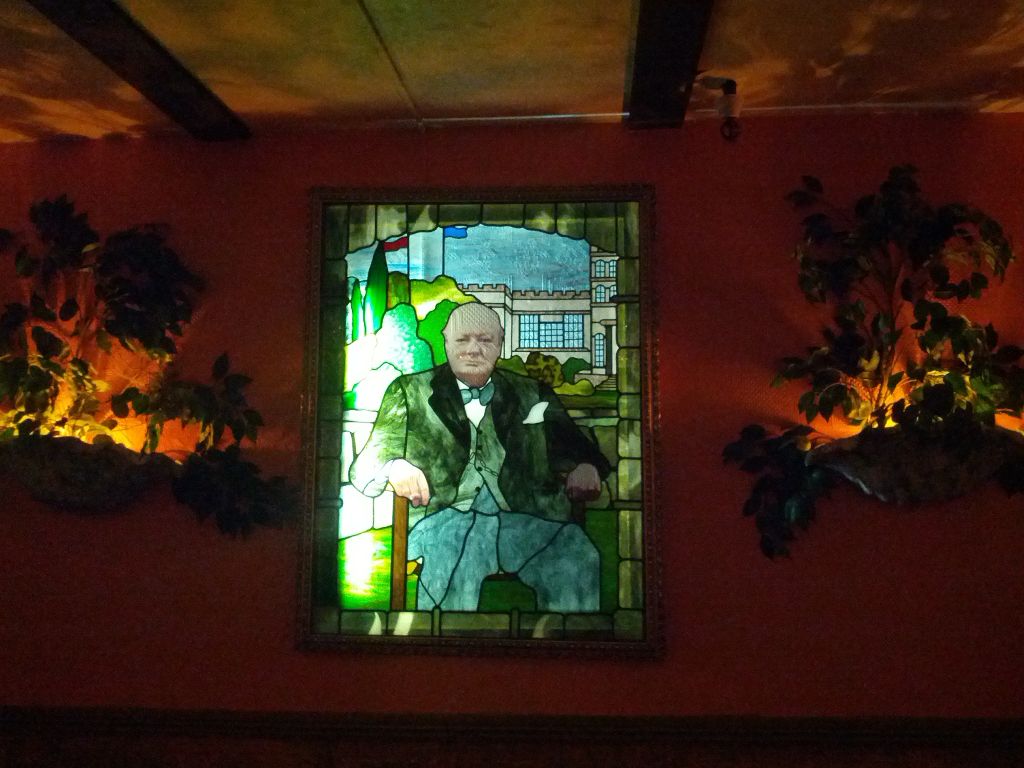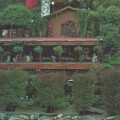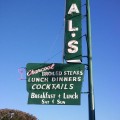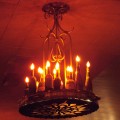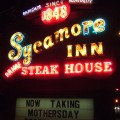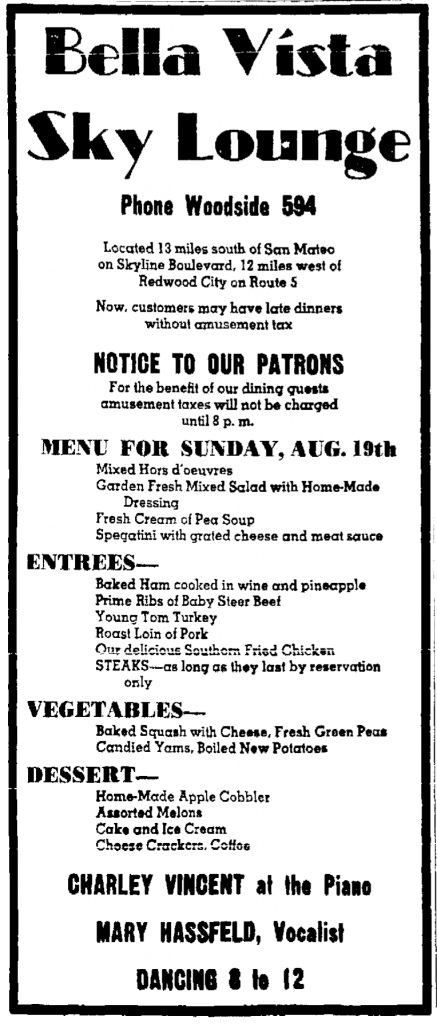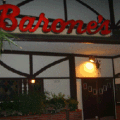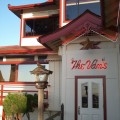I finally made it to Caesar’s in Tijuana, which my friend Peter Moruzzi (author of Classic Dining and other books) reported on in 2012 after it was reopened by Tijuana star chef & restaurateur Javier Plascencia. The original Caesar’s, where the Caesar salad may have been invented, was opened in Tijuana by Caesar Cardini in the 1920s.
Caesar Cardini
Born in Italy in 1896 as Cesare Cardini, he immigrated to the US with his brothers Alex (Alessandro), Nereo, and Caudencio. He opened a restaurant in Sacramento before moving to San Diego and opening his first Tijuana restaurant with Alex and Guadencio’s involvement.
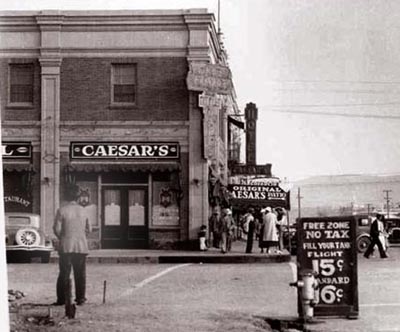
Original Caesar’s Place restaurant in the Hotel Comercial, 2nd & Revolución, Tijuana, c. 1930 – image by The Kitchen Project
Original Caesar’s Place was opened by Cesar Cardini in Tijuana about 1924 in the Hotel Comercial at 2nd and Revolución, next door to the Mexicali Bar, the “World’s Longest Bar” (demolished for a Woolworth’s, but the Hotel Comercial building still stands – enter “Av Revolución 804” in Google Street View to see it).
He also opened a restaurant at the Hotel Caesar’s Place in 1927 at Revolución and 5th Street. There is a plaque on the sidewalk in front of the entrance to Caesar’s today, which is still in the Hotel Caesar. I assume Caesar Cardini owned the hotel that bore his name but I haven’t been able to confirm this.
Caesar’s restaurants became very popular in Tijuana in the 1920s and 1930s with Americans and Hollywood celebrities who were flocking in droves to Tijuana to drink (America was still in Prohibition), dine, and gamble.
But after Nevada legalized gambling in 1931, Prohibition ended in 1933, and Mexico made gambling illegal in 1935 business dropped off.
According to the Reno Evening Gazette in July, 1936, Caesar Cardini closed his café, which was probably the Original Caesar’s location in the Hotel Comercial because by the 1940s the space had a club called Tropics (the pink front with the neon “Tropics” sign that can be seen in the postcard above; and next door to the hotel can be seen the long Mexicali beer hall).
He left the restaurant business in Tijuana and opened the Caesar Cardini Cafe in downtown San Diego at Front and B Streets, but due to pressure by rival nightclubs partly owned by mobsters who made threats to Cardini’s musicians, among other strong-arm tactics, it closed in six months. Afterwards he became a partner in two local restaurants, the Tavern Hacienda at 47th St. and University Ave. and the Beacon Inn in Cardiff. He even opened his Chula Vista home to diners as the Caesar Cardini Villa, serving 50 cent meals. In 1938 he moved with his family to Los Angeles and opened a liquor store in Montclair. In 1950 he started bottling his salad dressing and eventually he opened Caesar Cardini Foods store on La Cienega, which was very popular as by then the Caesar salad had become the new fad (more on that later). Caesar Cardini passed away in 1954. His daughter Rose trademarked his salad dressing’s name in 1983 and developed a large salad dressing business (the dressing is bow made by T. Marzetti company).
San Diego note: Caesar Cardini never owned Caesar’s at 535 University Ave. in Hillcrest. It was owned by Caesar Pastore and his family from 1928 until 1972, then it became Cavalieri’s (1972-1978), The Summer Place (1978-84), the beloved (and frequented by yours truly) City Deli (1984-2013), and Harvey Milk’s American Diner (2013-2014). Nor did Cardini own Caesar’s in Mission Valley and Grossmont Center, or Little Caesar’s in Point Loma (all owned by the Pastore family and all closed).
Meanwhile, Hotel Caesar’s in Tijuana was enlarged during the 1940s and 1950s. Original Caesar’s Place at the hotel stayed open but was renamed Caesar’s Cafe, then just Caesar’s. Note in the above postcard view the new tower, while the building to the right of the tower is clearly the original hotel, as seen in the 1920s photo earlier in this post.
By the 1950s the hotel had grown to three stories and its exterior looked much as it does today, except for the signage.
There also was a Caesar’s Palace at one time at 4th and Revolución, on the second floor above a drug store (it had an outdoor patio for alfresco dining as well).
The Caesar Salad
The exact origins of the Caesar salad are unknown, but there are at least four origin stories:
- The oldest story (reported the Zanesville Times Recorder in 1947) is that Caesar Cardini invented the Caesar salad at his eponymous Tijuana restaurant in the 1920s. His daughter Rosa was more exact. In Better Homes and Gardens in 1960 she claimed he invented it on the 4th of July, 1924, when they were running low on food, out of Romaine lettuce, a one-minute coddled egg, garlic croutons, Parmesan or Romano cheese, lemon juice, garlic, mustard, Worcestershire sauce, whole pepper, pear vinegar and olive oil (no anchovies), and served as a main course of dressed whole Romaine leaves that were eaten with the fingers.
- The book “Dining Out in Hollywood and Los Angeles” by Craig Davidson, published in 1949, stated that a former partner with Caesar and Alex, Paul Maggiora, invented the salad in 1927 in San Diego for some pilots and called it the Aviator’s Salad, but Alex Cardini renamed it the Caesar salad after his brother. Paul later opened the famous restaurant Paul’s Duck Press in downtown Los Angeles, where he served the Caesar salad he claimed to have invented (as whole Romaine leaves).
- In 1968 Caesar’s brother Alex Cardini claimed he invented the salad in 1926 in his Mexico City restaurant and named it after his brother. Alex’s granddaughter Carla Cardini has said that Alex actually invented the salad at Caesar’s in Tijuana when he was a partner in his brother’s restaurant, naming it the Aviator’s Salad because he made it for a group of airmen from San Diego. Later he served the salad in his Mexico City restaurant as “the original Alex Cardini Caesar salad”.
- In 1988 it was reported by Barbara Hansen in the Los Angeles Times that in 1918 in Austria an Italian named Beatriz Santini created a salad of Romaine lettuce, oil & vinegar, parmesan cheese, and soft-boiled eggs. Her son Livio Santini emigrated to Tijuana, worked for Caesar Cardini, and made Caesar his mother’s salad around 1925, which was a hit with Caesar’s customers.
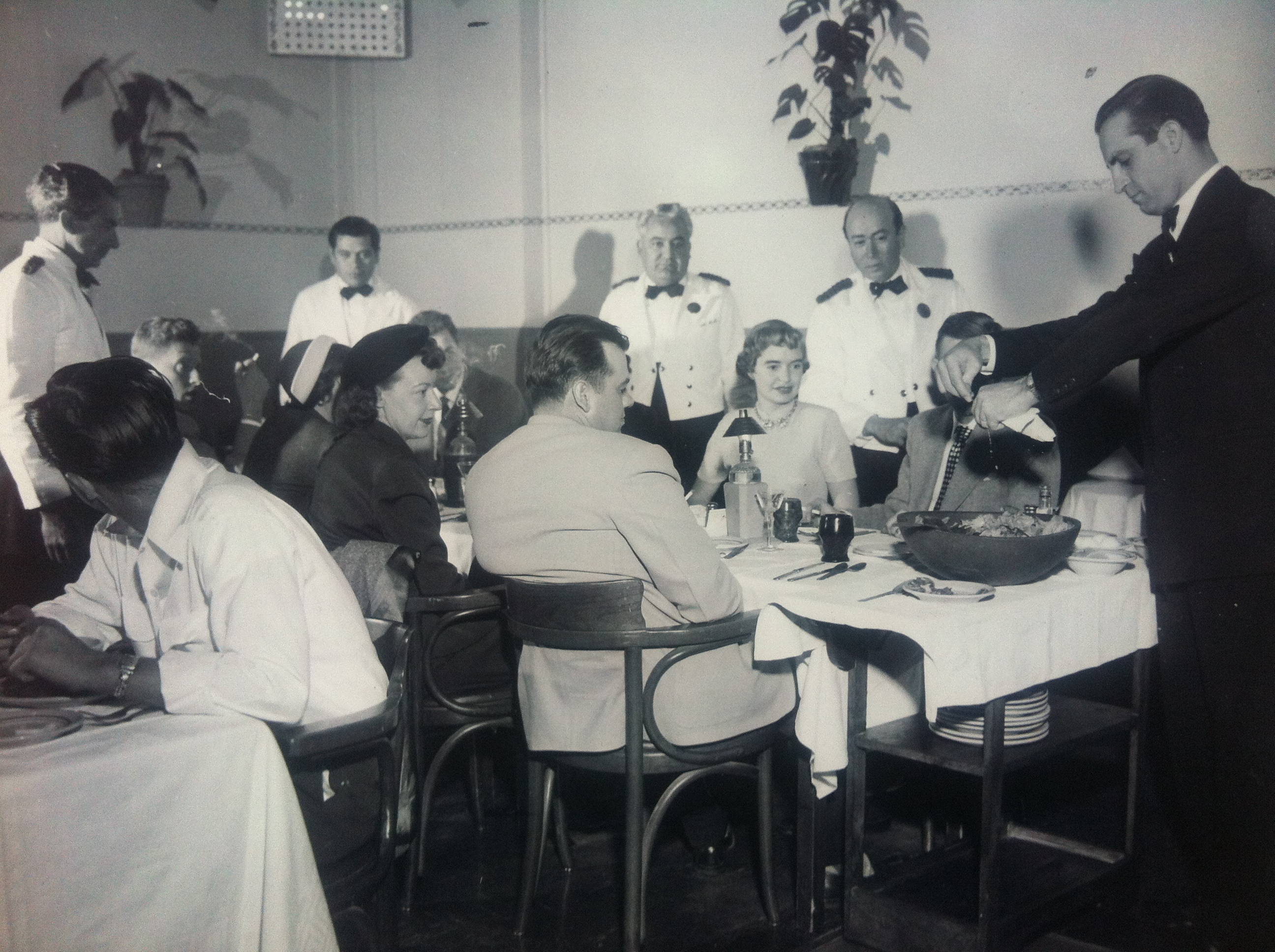
Ensaladero Guillermo Carreño Olsen, who would later open his own restaurant in Tijuana called El Bodegon de Guillermo (destroyed by fire in 1978) – image by Carrolyn Carreño
Whichever story you believe, here are some interesting tidbits about the Caesar salad:
- Julia Child (the famous chef) ate with her parents at Caesar’s in Tijuana in the 1920s and was served a Caesar salad, prepared tableside by Caesar Cardini himself, that was served as whole leaves of Romaine. Whether he invented it or what it was named at the time she couldn’t recall.
- Sometime in the 1930s the salad was introduced in Los Angeles, but it didn’t become popular in Southern California until after WWII. In 1945 Sunset magazine published a recipe for a “Romaine salad” which was being served at La Avenida restaurant in Coronado, CA (near San Diego), which was a Caesar salad, if not by name, by ingredients (but without anchovies).
- In 1948, Lucius Beebe in Gourmet magazine said it was “the gastronomic highlight of the current moment” in Los Angeles as it was being served at Chasen’s, Romanoff’s, Hansen’s Scandia, Perino’s, the Town House, and the Brown Derby on Hollywood and Vine. But, curiously, a 1948 Brown Derby menu shows no Caesar salad listed.
- In 1949 the Caesar salad became a nationwide fad and started appearing on menus across the country (“Fads of 1949” in the Britannica Book of the Year, 1950).
- The original Caesar salad had no anchovies, but in a 1950 cookbook (Love and Dishes by Niccolo de Quattrochiocchi) a recipe was published from the Pump Room in Chicago which called for six anchovies to be chopped and added to the salad dressing. By 1957 Sunset magazine’s published recipe also called for anchovies.
Caesar’s restaurant today
In the 1980s as a young man I went to Tijuana with friends to party and shop for shoes but I was soured by the atmosphere in the late 80s. Too many American college yahoos and sailors would fill the town on weekends, drinking until they got sick, yelling and carrying on. Every bar it seemed tried to shove cheap tequila down your throat whether you wanted it or not. So I stopped going there. My last visit was around 1989, though I went to Rosarito and Ensenada a few times in the early 90s. In 2012 I returned to Ensenada and I couldn’t believe how much it had changed for the better (as far as I’m concerned). American tourists mostly stopped going during the drug cartel violence of the 2000s. Now it’s mostly Mexican tourists (with a few adventurous American tourists) who don’t go just to get wasted on tequila, but go for the excellent food and the wine & beer. The cocktails are better, too. In the 80s I didn’t care if my margarita was made with a mix, but now I do.
Going to Caesar’s today is a wonderful experience. The place was packed with people, many who dressed up for a night out. Perhaps not in suits like in this vintage postcard, but in nice clothes (no jeans and t’s).
The first room at Caesar’s is long, with a bar on one side about a third of the way down the room. The ceilings are coffered wood and the floors are in a black & white checkerboard pattern. The walls are covered with dozens of old photographs and memorabilia of Tijuana.
The menu is Continental. Some of their specialties (besides the Caesar salad) are beef Wellington, duckling a la orange, escargot, French onion soup, and ensalada Victor, invented in the 1940s at Victor’s restaurant in Tijuana, a salad of Cotija cheese, olive oil, egg, mayonnaise, and wine vinegar. But you can also get Mexican food, steaks, seafood, chicken dishes, and pasta.
My friend and I shared a Caesar salad, which was made tableside by Armando, an ensaladero at Caesar’s for over 30 years! I also had a beef tongue appetizer, which was excellent, and beef Wellington, but I didn’t know that it would be cooked medium. It was very tender but a bit overdone for my liking. When you go, if you order steak, here are the Mexican-Spanish translations (from Quora):
Rare = Casi cruda
Medium-rare = Medio cruda
Medium = Término medio
Medium-well = Tres cuartos
Well-done = Bien cocida
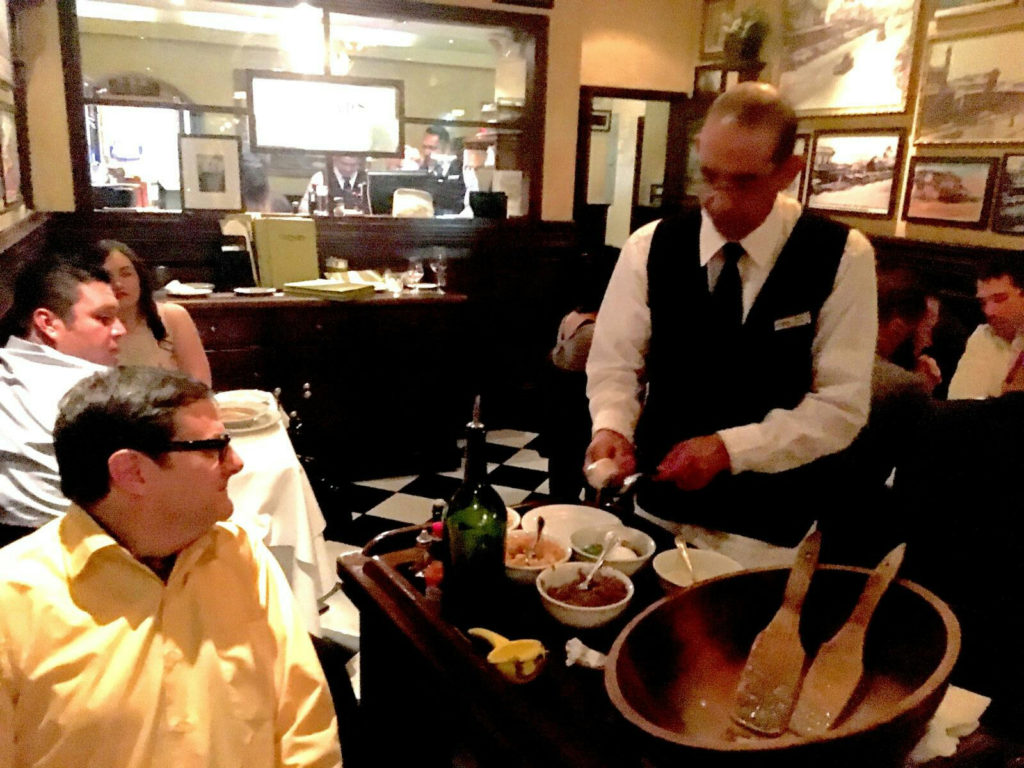
The Jab watching Armando prepare the Caesar salad at Caesar’s in Tijuana – photo by D. A. Kolodenko, 2016
Caesar’s
Av. Revolución 1059, Zona Centro, 22000 Tijuana, B.C., Mexico
Phone: +52 664 685 1927
Open Sun-Wed 10:00am-10:00pm, Thu-Sat 12:00pm-12:00am


